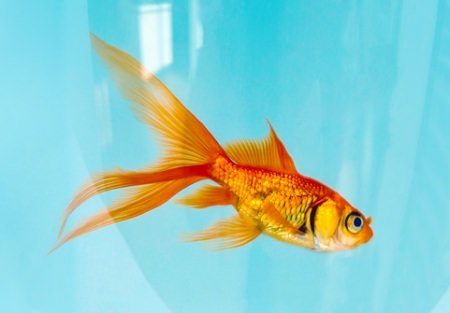| Back to Back Issues Page |
 |
|
The Goldfish Gazette, Issue #073-Disease Symptoms, Primary or Secondary January 30, 2020 |
Goldfish Care TipsA Free Monthly Resource For Goldfish Enthusiasts In This Issue When treating illnesses, don't assume the symptom you are treating is the only disease the fish has. Many illnesses such as fungus are a secondary symptom of another underlying problem. Disease Symptoms, Primary or Secondary? When the immune system of a fish gets weakened, many pathogens present in all water will take the opportunity to attack. This is just nature at work, eliminating the sick and weak from the eco-system. Adequate Food the First RequirementIf a fish is struggling to get adequate food in a mixed variety aquarium, over time it will slowly lose condition, its immune system weakens and finally there is a posting on Facebook showing a fish in great distress and the owner wanting help.Many fish shown on Facebook are very emaciated, and this detail often seems to be missed by the owner. The image above is a good example of an under-nourished fish. Look at the fullness of a sick fish. If the body shape isn’t full and rounded, that may be the primary cause of any illness. Once a fish gets into an emaciated state, there are multiple opportunistic pathogens that will attack it, often at the same time. Treating the Cause as Well as the SymptomDiagnosing an illness is impossible in many cases without equipment such as a microscope due to the size of the pathogen. Apart from anchor worm, lice and Ich, flukes are probably the next smallest pathogen that can be visibly seem, but that requires good eye-sight and very careful examination under ideal lighting conditions.Because of this we must treat for multiple diseases at the same time. For example, fungus is caused by parasites more often than injury. Treating for fungus using salt and methylene blue will also treat protozoan parasites such as Costia and any bacterial conditions, but it won’t kill flukes. Basic Treatment StepsWhen you find one of your fish with clamped fins, (dorsal and pectoral fins held tightly to the body), lethargic, not interested in food, or has redness showing on the body or fins, any of these are indications the fish is sick.There are a number of steps to take in order of importance: 1. Check the water parameters; pH, ammonia and nitrates. This is done first because something may have caused the water to become toxic, and the rest of your fish will be in danger unless an immediate water change is made. Remember, you are trying to find the primary cause of the problem. 2. Isolate the fish in a hospital tank. If the cause of the sickness was due to water quality, the sick fish still needs time to recover from whatever illness it has succumbed to. 3. Add un-iodized cooking salt (or aquarium salt) to the hospital tank water. If water quality was the problem, add one teaspoon per gallon (4 liters). If water quality wasn’t the problem, we need to start treating for possible causes. Add one tablespoon of salt per gallon (3-4 grams per liter) over several hours. If the fish at any time starts to turn on its side the fish is too weak to take that level of salt. This would be rare as Goldfish can take triple this amount if added gradually. Remove the fish to fresh water and try again using half the dose. 4. Observe the fish for a day or two. There should be visible improvement such as the dorsal being held erect. At the higher salt level bacterial, fungal and protozoan infestations are all being treated. Check for twitching or rubbing behavior by the sick fish or your other fish which indicates parasites. 5. If the sick fish hasn’t become more active by the end of the second day or your other fish are exhibiting twitching or rubbing behavior, suspect flukes which salt won’t kill. Get a Praziquantel based medication such as API General Cure. Praziquantel kills flukes, internal and protozoan parasites. Leave fish in the Hospital tank until all fins are erect, all signs of the disease are gone, and the fish is active and feeding normally. Comments? Ideas? Feedback? I'd love to hear from you. Just reply to this e-zine and tell me what you think, or what topics you want covered. Next Month's Topic Water Testingwww.facebook.com/aboutgoldfish |
| Back to Back Issues Page |